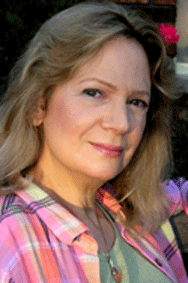Who among us has never been spooked by one of Stephen King’s novels? In a previous blog post, I wrote that Salem’s Lot disturbed me so much that I locked the book outside my apartment every night; then devoured the story in tasty bites during daylight hours. King’s latest novel, Dr. Sleep, is a sequel to one of his most revered books, The Shining, which was published in 1980 and adapted to an iconic horror movie . Featuring an adult Danny Torrance, the telepathic child from the original book, Dr. Sleep is an instant bestseller. Most reviews are favorable but the naysayers – many of them King fans – are very vocal in their disappointment. Perhaps King anticipated the criticism when, in an author’s note, he wrote, “Nothing can live up to the memory of a good scare, especially if administered to one who is young and impressionable.” Instead, he said, his intention was to tell “a kick-ass story.”
Writing a sequel can be easy work. Writing a good sequel is very hard. On the one hand, the author has already successfully created memorable characters in believable settings; a built-in fan base has invested in the story. On the other hand, the success of the first book creates expectations that must be met or exceeded in the follow-up. If the author didn’t already have a continuing story in mind when writing the original, it’s a bit like trying to conceive a second child that is as accomplished as the first: at once similar and different, both seeking our love and praise. Each child needs to stand on its own while connected to each other.
Sequel, prequel or something else entirely? When a follow-up to an original story sets characters or plots back in time, it is called a prequel. When the follow-up gets a follow-up, it is called a trilogy (example: Lord of the Rings). More than three connected books are considered a serial; either with established characters but few references to past events (example: Hardy Boys or references to earlier plots that rely on the reader to follow the series chronologically (example: Harry Potter).
Unlike movies and TV shows where commercial successes spawn hopeful successors, bestselling books don’t guarantee a sequel; at least not from the original author. Other writers may take up the pen, carrying the original story forward or using established characters or plot to suggest a new vision. Sequels to Margaret Mitchell’s Gone With the Wind include Scarlett, written by Alexandra Ripley and authorized by Mitchell’s estate. The book was excoriated by literary reviewers and had mixed responses among general readers. At the other end of the spectrum is Jean Rhys’ highly acclaimed Wide Sargasso Sea, written more than 100 years after Charlotte Bronte’s classic, Jane Eyre. Rhys’s award-winning novel takes a character referred to but never seen in Bronte’s story – the insane first wife of Jane Eyre’s love, Mr. Rochester – and reimagines the wife’s viewpoint of the cause of her insanity, casting Mr. Rochester in a very different light. Brilliant!
It’s hard to make a second kiss as exciting and rewarding as a first kiss. Most sequels fall short. Those that succeed enhance our appreciation of the original while savoring the second.

